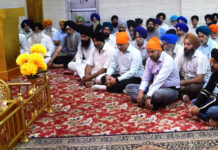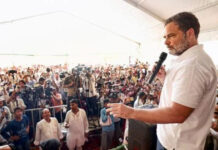NEW DELHI: External Affairs Minister S Jaishankar on Thursday said the standoff between the Indian Army and the People’s Liberation Army in Ladakh last year at the Galwan Valley in Eastern Ladakh along the Line of Actual Control (LAC) has ‘profoundly’ disturbed India-China relations.
“For all the differences and disagreements we may have had on the boundary, the central fact was that border areas still remained fundamentally peaceful. The last loss of life before 2020 was as far back in 1971 that is why the events in eastern Ladakh last year, have so profoundly disturbed the relationship,” he said while speaking at the 13th All India Conference of China Studies. “They not only signalled a disregard for commitment about minimising troop levels but also showed a willingness to breach peace and tranquillity… We are yet to receive a credible explanation for the change in China’s stance or reason for the massing of troops,” he added. Jaishankar said that after the 1962 conflict, Beijing and New Delhi exchanged ambassadors only in 1976. The first Prime Ministerial visit to China after 1954 actually happened only in 1988. “Rebuilding of our ties was actually painstaking and arduous,” he said. “For the last three decades, interactions and exchanges grew steadily in some areas. China became one of our largest trading partners, a significant source of investment, a participant in projects and infrastructure building and a very substantial destination for tourism and education,” the External Affairs Minister pointed out. He stated that in the years that passed, the Indian side obviously did not see significant progress on arriving at a common understanding of the alignment of LAC in India-China border areas. With regard to where relations between New Delhi and Beijing stand, the External Affairs Minister said that he does not have a definite answer to offer at “this moment”. “Whether it is our immediate concern or more distant prospects, the fact is that the development of our ties can only be based on mutuality. The three mutuals — mutual respect, mutual sensitivity and mutual interests — are its determining factors,” Jaishankar said further.
He pointed out that any expectation that they (the three mutuals) can be brushed aside and “life can carry on undisturbed” despite the situation at the LAC border is simply unrealistic. While discussions regarding disengagement LAC are underway, for ties to “steady and progress”, “policies must take into account the learnings of the last three decades.” “Experiences of the past have taught us the importance of stabilising our relationship (with China) even while adjusting to changes. From that, we can seek proper guidance that will be to the benefit of both nations,” the external affairs minister stated. India and China agreed to push for an early disengagement of the frontline troops in eastern Ladakh during the ninth round of the China-India Corps Commander Level Meeting held on the Chinese side of the Moldo-Chushul border meeting point on Sunday. The joint press release issued by Defence Ministry on Monday said that the two sides had a candid and in-depth exchange of views on disengagement along the Line of Actual Control in the Western Sector of China-India border areas. The ninth round of Corps Commander Level talks between India and China ended at 2:30 am on Monday. The meeting lasted for more than 15 hours after starting at 11 am on Sunday at Moldo opposite Chushul in the Eastern Ladakh sector to address the ongoing military standoff. The two countries have been engaged in a stand-off along the Line of Actual Control (LAC) since April-May last year. While China began amassing massive military strength along the LAC, India responded with a befitting build-up. The last round of Corps Commander-level talks between both countries were held on November 6, 2020 in Chushul in Eastern Ladakh. On August 29-30, India occupied heights along the northern and southern bank of the Pangong Lake which includes dominating positions overlooking the Chinese military deployed in that area.
The Chinese have been asking India to withdraw troops and tanks first from the southern bank but India has been asking for disengagement from all the friction points.



























